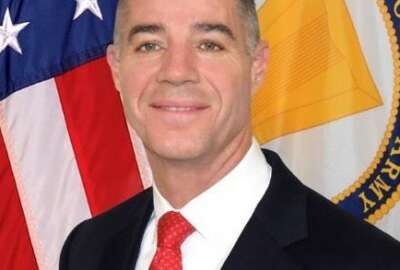
Army’s new Rapid Capability Office targets Christmas for first deliverables
The Army's RCO plans to deploy new electronic warfare systems in Europe, then Korea. A more reliable version of GPS is next on its list.
The new acquisition organization the Army established less than a year ago to quickly close gaps in warfighting capabilities could start delivering its first products to the field in time for Christmas.
When the service’s top leaders stood up the Rapid Capabilities Office, they directed it to begin with three focus areas in which they fear the Army is at risk of being outmatched by “near-peer” adversaries: cyber, electronic warfare, and assured positioning and timing.
By the end of the year, the RCO hopes to have reached a fielding decision for new electronic warfare capabilities to be deployed to units in Europe, and shortly thereafter, will start examining commanders’ specific EW requirements on the Korean peninsula. Then, next summer, the office will begin operational assessments on position, navigation and timing systems that are hoped to be more reliable and survivable than today’s GPS equipment.
Doug Wiltsie, the RCO’s director, said there’s a reason the rapid acquisition outfit is deploying its first capabilities to one geographic area at a time: it was never intended to supply new capabilities to the entire Army all at once.
“We will field to the combatant command that has the strategic gap, and then we will feed the information we get into the enduring programs of record,” he said at AFCEA’s annual TechNet symposium in Augusta, Georgia. “We are not designed to build the enduring institutional solution, because if it was available today, those guys would be buying it already. What we’re really trying to do is take this strategic gap, see how much we can reduce the operational risk for the commander and get him to a place of parity, or maybe a little bit above or below parity to allow him to win the fight. A lot of this is driven by the formations that we work on, and it’s more of a holistic approach. I haven’t seen a solution yet that had just one answer.”
With the objective of getting new capabilities into soldiers’ hands as quickly as possible, Wiltsie said much of the office’s initial work has been focused on looking for ways to repurpose equipment the Army already owns, combining and tweaking those systems to do things that weren’t possible before.
“But what you’ll see, as we get our feet set with concepts of operations and the type of materiel we’re looking for, is that we’re going to come to industry to look for the best of breed,” he said. “The [Army Rapid Equipping Force] just did that with a dismounted capability for EW in the last six months, and we’re leveraging that. You’re going to see something from us soon on a mounted capability, because although we have a good mounted system, we want to make sure it is the best mounted system. And that’ll happen over time until we get to a place where we’re out and the enduring program is coming in.”
For its first deployments of new electronic warfare systems, Wiltsie said the plan is to begin at “the edge,” outfitting units at the level of an Army brigade and below. In phase two, the systems will be fielded at the division and corps levels, followed by a final phase that will fold the systems into Joint Task Forces where they can connect and interoperate with the other military services.
Broadly, the RCO’s approach to new capability development is to prototype new systems in lab settings, assess them within exercises like the Army’s twice-annual Network Integration Evaluation, and then field them to the commanders who have cited capability gaps that aren’t being addressed by a formal program of record that’s already planned for near-term deployment.
Wiltsie said recent congressional action to expand the use of rapid prototyping and other transaction authorities (OTAs) has made that broad framework more feasible in recent years.
“The language in law is now allowing that to be done by anyone in the acquisition community, and I think that’s going to be a capability that as we enhance it is really going to get us a lot of great feedback,” he said. “We’re rather small, so our focus is collaboration. We collaborate with anybody who wants to. If there’s a capability that somebody else is developing and we only have to deal with the Army side of it, we can leverage their funds and what they’re doing. We have an Emerging Technology Office that’s going out to places within the Department of Defense and even beyond the department, looking at what the Strategic Capability Office is doing, what DIUx is doing, what DARPA is doing. We’re working through OTAs to get to the consortiums to get to new ideas.”
Copyright © 2025 Federal News Network. All rights reserved. This website is not intended for users located within the European Economic Area.
Jared Serbu is deputy editor of Federal News Network and reports on the Defense Department’s contracting, legislative, workforce and IT issues.
Follow @jserbuWFED
Related Stories






